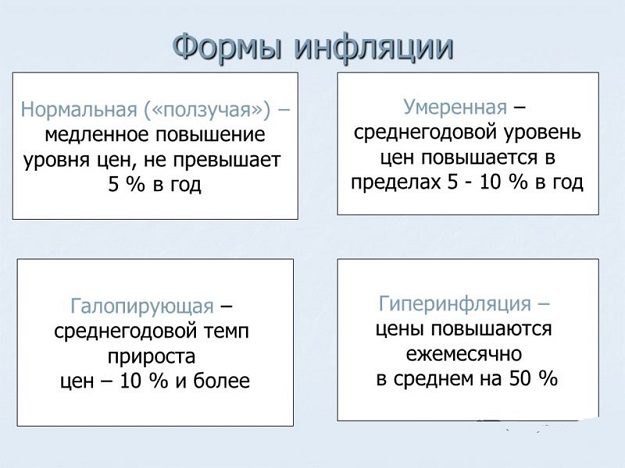
Overeating or the art of inflation
Content
1000 and 1 way to blow it into the bronchi
Before World War II, overeating worked wonders on motorcycles. It has grown a lot thanks to the aviation industry, as aircraft engines lost tremendous power as they climbed up. Terrible handicap in aerial combat! Aviation, armaments and motorcycle manufacturing are closely related (for example, BSA stands for Birmingham Small Arms!), The motorcycle was able to benefit from the transfer of technology. Think that in 1939 the compressor flats of the BMW 500 developed a small change from 80 hp. up to 8000 rpm and reached 225 km / h!
So we were on the right track, but between the famous highly aerodynamic "garbage" fairings and the supercharged engines, the bikes reached staggering speeds and, above all, are very dangerous. We have to put this in the context of the times, with tires as well as brakes that were largely overshadowed and infrastructure that was not. Faced with many fatalities, the rules were changed and when the World Cup was created in 1949, overloading was banned from competition. After this stop, the process struggles to take off again on the motorcycle. Indeed, how to promote technologies that dramatically increase productivity without relying on competition? In fact, the commercial positioning of supercharged motorcycles became shaky and they almost disappeared from the range of all manufacturers for a long time. However, overeating is good!
Turbo madness
In the 1980s, the West, which is barely recovering from the first oil shock (1973), did "downsize" early to reduce engine consumption. In cars, large displacements no longer have wind in the sails, so we start to inflate small motors with a turbocharger. F1 uses this technology at the cost of an equivalence that will last a long time: naturally aspirated 3 Ls with 1,5 Ls supercharged. Very quickly, the battle will turn out to be uneven, small turbo literally crush the big "atmosphere". With a charge pressure of up to 4 bar, the 1,5 liter qualification achieves 1200 hp. (!) when 3L is about half as much. In the general euphoria, the technology progresses in leaps and bounds and overeats from F1 to every car, taking full advantage of the competitor's image. Carried away by the wave, the bike starts with less success. The 4 Japanese cars sold at the time were not very successful due to lack of credibility. They are fierce, with high turbo response times and frequent cycles, as their design is not very inspired. Only Honda is intellectually revising its copy, replacing its turbocharged 500 CX with a more civilized version of the 650. In short, the turbo will quickly return to its box and will not be forgotten ... Until Kawasaki brings us the new and most impressive supercharged motorcycle, the H2, but this time without turbocharging. Indeed, there are a thousand and one ways to blow up an engine. Let's take a closer look.
Turbocharger
As the name suggests, it is based on a turbine and compressor combination. The principle is to use the residual energy of the exhaust gases to drive the turbine. Mounted on a shaft attached to a compressor that it actually drives, it pushes intake gases through it. The higher the exhaust gas consumption, the more power the turbine has. Thus, there is relative weakness in very low modes. Today, very small variable-geometry turbochargers almost erases this defect. Mounted on hydraulic bearings, the turbo can run at 300 rpm !!!
Plus: "Free" recovered energy / good consumption
Smaller: Modest efficiency at very low rpms. Fast response time. Mechanical complexity and very hot areas difficult to control. (Tubo might turn red!). Difficulty charging one cylinder.
Mechanical compressors
Here, the turbine is replaced by a mechanism on the engine, which therefore drives the forced feed system itself. This effectively recharges all engines, even the small volumetric single cylinder. There are various types of compressors. Centrifugal, spiral, centrifugal-axial, paddles (this is the solution Peugeot chose for its 125 scooters) and volumetric.
The spade compressor (root type) is called volumetric. It is driven at a speed close to that of the engine, or even identical, but its volume, being higher than that of the engine, the gases are mechanically pushed to the intake intake. Strictly speaking, there is no internal compression in the compressor, but because it works more than the engine size, there is overcharging and therefore increased power.
Other processes use turbines that rotate at very high speeds and thus compress gases by centrifugal force. On the Kawasaki H2, the compressor sucks the gases into its center and pushes them out of the turbine. It is the very high rotational speed that creates this phenomenon. Connected to the crankshaft by epicyclic gears, it runs 9,2 times faster, giving almost 129 rpm when the engine rises to 000 rpm! Thus, the discharge rate is not quite linear as in the fractional compressor, because the volumetric efficiency of the centrifugal compressor increases with speed, however the mechanical efficiency is better.
Plus: Constant or near-constant overeating rate, regardless of diet, therefore excellent availability and torque everywhere. No response time, no hot zone and no rechargeable capacity for all engines, even one cylinder.
Less: the power consumed to compress the engine is not "free", so it causes excessive consumption and lower efficiency
Electric compressor
This is a solution currently being tested in the automotive industry (in Valeo): an electric motor drives the compressor up to 70 rpm. Electrical power can be provided by a generator that recovers some of the energy during deceleration and braking. The compressor and its motor weigh about 000 kg.
More: There is no mechanical connection to the motor or hot zone. The ability to control the compressor on demand, with multiple display times to modulate the behavior of the motor on demand. No response time (about 350ms, compared to almost 2 seconds for turbocharging!)
Less: For the electrical powers involved (over 1000 W) it is difficult to develop at 12V. In fact, a 42V passage must be considered to reduce the intensity of the currents.
Intercooler * Kesako?
* air cooler
As seen with a bicycle pump, the compressed air heats up. This is bad for the motor and takes up more space (expansion). To cool it down, compressed air is passed through a radiator (also called an air / air exchanger or air exchanger). This relieves the engine and increases the load pressure and / or compression ratio in favor of efficiency. Because of their size and weight, and the lower supply pressure, motorcycles often do not need a heat exchanger. Peugeot, however, has adopted one on its Satelis compressor.
Other load:
Wave effect compressors: Used by Ferrari in Formula 1 in the 1980s are now all but disappeared. However, we could see at the 2016 Milan Motor Show a company that introduced a drum system called a “drum charger” that was very different in principle and much less efficient than Ferrari “trains”. Here, too, the exhaust pressure puff is used to load the engine. This excess pressure moves the diaphragm, the other side of which is in direct contact with the intake circuit. The valve system then flushes the admitted gases into the engine when the diaphragm reduces the intake volume. Once the pressure is released, the spring returns the diaphragm to a position that actually sucks in fresh gases through the first set of valves. Very simple and inexpensive, this process achieves 15 to 20% power, with little reduction in consumption due to the greater availability of the engine at low rpm.
Natural load: it consists of tweaking the engine (as you tune the instrument) and using the pulsation in the intake air to improve inflation. This is what the variable length technique seeks to achieve over a wide range of speeds. The charging speed can be up to 1,3. That is, the provided 1000 cm3 offers fishing with a volume of 1300 cm3.
Dynamic air intake: The process is to use the speed of the motorcycle to push air into the intake. The gain is very modest: 2% at 200 km / h, 4% at 300 km / h. That is, 1000 cm3 behaves like 1040 cm3 to 300 ... we also use it very rarely and for a short time!
Conclusion
A very promising technology, overcharging still has to prove on motorcycles. His eventual return to Endurance opens doors for him. Indeed, from the 2017/2018 season, 3 cylinders up to 800 cm3 and 2 cylinders up to 1000 cmXNUMX and XNUMX cylinders up to XNUMX are allowed in the category of prototypes. about the emergence of new models of bodybuilders.

